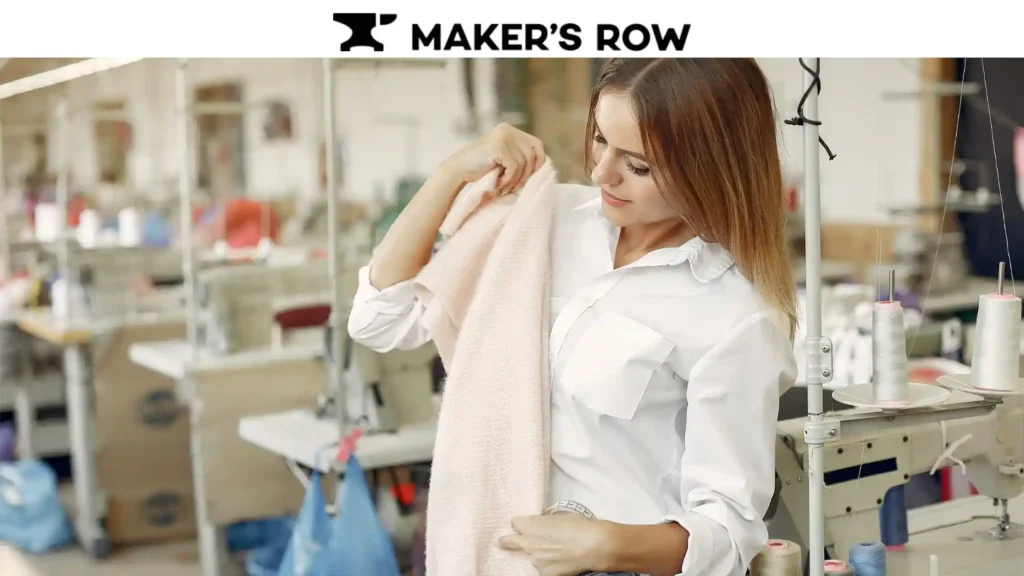The fashion world has a reputation for conceiving, inventing, and rushing onto the next craze; it is now turning into a technology innovation hub through tech efficiency. The manufacturing of smart apparel is changing how clothing is produced and putting efficiency technologies center-stage in terms of production. Clothing makers are now utilizing automation, artificial intelligence and data analytics to cut expenses, speed up processes and reduce waste with robust quality controls—a certain departure from an industry that has historically relied on manpower.
The Push for Tech Efficiency in Fashion
Over the course of the past ten years, the fashion industry has come to focus even more on increasing the optimisation of clothing manufacturing. In other words, it is integrating technology into the existing processes that requires extra care to undertake changes in methods of production in order to minimize failure by people and conserve resources. Fashion manufacturing companies that have integrated the use of technology and analysis of data have noted that the setting is experiencing improved efficiency.
One of the biggest factors pushing for such change is the call for sustainable fashion. The consumer and brands are realizing the impact they have on the environment through product manufacturing. Thus, enterprises are working to minimize waste in fashion, not only as a noble economic cause but also to improve profits. Manufacturers have been using technology to minimize the wastage of resources and to improve the efficiency of their production lines.
You can locate manufacturers who can produce high-quality material quickly with rising technological efficiency by using Maker’s Row.
Book A Demo! Save on the Annual Plans

Technology in Apparel Factories: The Role of Automation
Automation is one of the key drivers that has caused major changes in the apparel manufacturing industry. Conventional apparel manufacturing industries require manual operation in all or most aspects of production, including cutting, sewing, packing and inspection. However, as the levels of tech efficiency increase, many of the tasks are accomplished by machines.
For example, automated cutting machines have tremendously increased tech efficiency in the manufacturing industry by enabling the cutting of fabrics to great precision. Based on the process applied in these machines, the layout of patterns on fabric is done in such a way that there will be maximum utilization for each piece of fabric without having to manufacture additional fabric to cover up the leftover fabric. It does so directly and serves to eliminate waste in fashion and the costs it accrues from excessive material.
The automation of sewing is another area where technology emphasizes its importance. Sewing has been a human-intensive process for many years but due to recent innovation and tech efficiency, it has become relatively easy to produce devices that are able to perform the sewing process with less or no interference from humans. This further increases the rate of production and also increases the measures of standardization and quality assurance.
AI and Data Analytics Benefits in Apparel Manufacturing
AI coupled with data analytics is one of the vital tools that have been embraced to enhance tech efficiency in apparel manufacturing organizations. These technologies offer a chance and a way to give manufacturers a real-time view of production processes, minimizing waste and increasing efficiency where necessary by informing decisions based on data.
For instance, AI assists in forecasting demand for manufacturers to determine which type of clothes will be popular in a particular season or a country. In this way, the apparel factories can review their production plan to prevent overproduction, which is one of the key components of fashion waste management, by accurately projecting the expected demand. The current system allows manufacturers to do so instead of making clothes without knowledge of their demand and seeing them end up in the landfill system.
Data can also be used for the measurement of the performance of machines put in place in factories. For example, the sensors can measure the productivity of a sewing machine and signal when service is needed to the managers. There is always a way to further improve tech efficiency not only by reducing model breakdowns but also by ensuring all other equipment is running at its maximum potential, which can help to increase the overall efficacy of manufacturers.
Minimizing Material Waste Using Technology
Fabric wastage was found to be one of the major sources of waste in apparel manufacturing, with trimmings and fabric residue being the most prominent. Conventional techniques of cutting lead to the generation of a huge amount of waste because the patterns are not well laid out. However, there has been significant development in digital pattern-making and cutting technology, which helps the manufacturers in using fabric in a much better way, which in turn is helping the concept of waste-less fashion in the fashion industry.
Besides effectively minimizing the use of fabric, some firms are starting to adopt 3D printing to make clothing goods 3D printing helps designers design clothes using fabrics with no need to cut them. This can help to reduce the amount of fabric used and, in addition, reduce the chances of people returning clothes due to ill-fitting—a very common problem in the fashion industry.
The utilization of sustainable and biodegradable materials in clothing factories is becoming more innovative. Due to advances and tech efficiency, producers can use materials that are either organic or recyclable as fabrics, which disintegrate at the end of their lifespan. It is used together with technologically driven processes of production in order to increase tech efficiency.

Smart Factories and the Internet of Things (IoT)
Smart factories are emerging through the IoT industry since all types of machinery, devices, and systems need to be connected to the central framework. In each of these factories, all the processes are continuously analyzed and data is collected in real-time to improve the utilization process.
For instance, IoT sensors can monitor the usage of raw materials to notify the manufacturers when something is out of stock. This means that manufacturers do not overorder material, thus helping reduce waste in the fashion industry. From this perspective, IoT is particularly useful in tracking energy use; factories can therefore cut on the amount of energy wasted by implementing IoT.
These integrated systems produce an ideal and highly efficient production network in which tech efficiency becomes the engine of manufacturing performance. Having immediate access to data greatly helps the manufacturers in making quick decisions needed to solve specific problems on the production line and enhance production efficiencies that minimize waste.
The Future of Smart Apparel Manufacturing
The further development of technology in apparel factories seems to be rather favorable. The use of machine learning, artificial intelligence, and IoT can only grow from here, meaning tech efficiency can only improve. Smart and efficient manufacturing centers and factories will be designed for apparel manufacturing where the cost and wastage will decrease surely.
On a similar note, anticipating increased consumer consciousness towards sustainable fashion, the pressure on apparel manufacturers to incorporate sustainable and innovative fabric production technology is set to rise. Those adopting these concepts in their business shall not only be ahead of their counterparts in achieving the best figure of minimizing waste in fashion but also gain a competitive edge in the ever-dynamic market.
How Maker’s Row Can Help?
Maker’s Row will connect you with sustainable manufacturers who are also on the tech efficiency train and willing to help your brand reach new heights with quality material and timely delivery. In this respect, Maker’s Row can serve an immense purpose of connecting brands with smart manufacturers by using its platform to help brands and manufacturers meet in the middle. Book a demo to know more.
Conclusion
Smart apparel manufacturing is not merely the next big thing; it is the evolution of fashion. Based on tech efficiency as the key premise, the industry is evolving towards eliminating waste and productivity enhancement as a guarantee for making the world a more sustainable place for both the buyer and the seller. With fashion companies, apparel factories and brands continuing to invest in and develop technology, the fashion industry is poised for a dramatic change for the better in terms of how it operates and how it is perceived.
Read More…